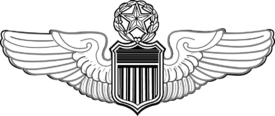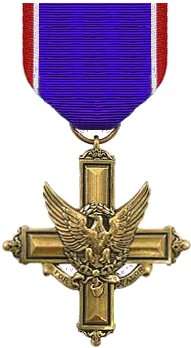William D. Dunham
| William Douglas Dunham | |
|---|---|
 | |
| Nickname(s) | Dinghy |
| Born |
January 29, 1920 Tacoma, Washington, U.S. |
| Died |
March 9, 1990 (aged 70) Bellevue, Washington, U.S. |
| Buried |
Sunset Hills Memorial Park Bellevue, Washington, U.S. |
| Allegiance |
|
| Service/ |
|
| Years of service | 1941–1970 |
| Rank |
|
| Unit | 348th Fighter Group |
| Commands held |
342nd Fighter Squadron 460th Fighter Squadron Squadron B, 464th Army Air Force Base Unit 62d Fighter Squadron 56th Maintenance and Supply Group 12th Strategic Fighter Wing 479th Tactical Fighter Wing Third Air Force |
| Battles/wars |
World War II Vietnam War |
| Awards |
Distinguished Service Cross Silver Star (2) Legion of Merit (2) Distinguished Flying Cross (4) Air Medal (7) |
William Douglas Dunham (January 29, 1920 – March 3, 1990) was a brigadier general in the United States Air Force.[1] He was a P-47 Thunderbolt and P-51 Mustang pilot and triple-ace during World War II.[2][3]
Early life
Dunham was born in Tacoma, Washington in January 29, 1920. He graduated from the Nezperce High School at Nezperce, Idaho, and attended the University of Idaho, from 1937 to 1940.[1]
Military career
Dunham completed the Air Corps Primary and Basic Flying schools at Santa Monica and Moffett Field, California, and graduated from Advanced Flying School at Luke Field, Arizona, receiving a commission as second lieutenant on December 12, 1941. Dunham was assigned as a pilot with the 53rd Fighter Group from December 1941 to September 1942 at Tallahassee, Florida, and later Howard Field in Panama Canal Zone. He next served as test pilot with the I Fighter Command in New York, until November 1942, and as a pilot with the 342nd Fighter Squadron in Bradley Field in Connecticut, through December 1942.[1]
World War II
In January 1943, Dunham deployed with the 342nd Fighter Squadron in Australia and New Guinea and served as operations officer and later commander. In July 1944, he became commander of the 460th Fighter Squadron in New Guinea and remained in this position until December 1944, when he became operations officer of the 348th Fighter Group in the Philippines. In January 1945, General Dunham returned to the United States and attended gunnery school at Foster Field in Texas, until May 1945. Upon graduation, he immediately returned to the 348th Fighter Group in the Philippines and continued to serve as operations officer and later became deputy commander.[1]
During the war, he became a triple ace and is credited with the destruction of 16 enemy aircraft in air to air combat, while flying both Republic P-47 Thunderbolt and North American P-51 Mustang.
Post war
In January 1946, following World War II, he was assigned as commander of Squadron B, 464th Army Air Force Base Unit, McChord Field in Washington, the position he held from February 1946 to May 1946. From May 1946 to June 1948, General Dunham was assigned to Selfridge Field in Michigan, as operations officer for 56th Fighter Group; commander, 62d Fighter Squadron; and assistant chief of supplies and later commander of the 56th Maintenance and Supply Group. Dunham was assigned in August 1948 as chief, Fighter Unit Training Section, Operations Division, Headquarters Strategic Air Command at Andrews Air Force Base in Maryland, and later at Offutt Air Force Base in Nebraska. He next served as deputy chief and later chief, Fighter Division, Directorate of Operations, Headquarters Strategic Air Command.[1]
Dunham left SAC in June 1951 to successively serve at Turner Air Force Base in Georgia, as commander, rear echelon; director of operations; and deputy commander of the 31st Strategic Fighter Wing; and director of operations, Headquarters, 40th Air Division. He departed Turner in April 1954, to become director of operations, 407th Strategic Fighter Wing in Great Falls Air Force Base in Montana, and later Far East Air Forces; he held the position until March 1955. His next assignment was as deputy commander, 71st Strategic Reconnaissance Wing at Larson Air Force Base in Washington, from March 1955 until June 1956. His next two years were spent at Bergstrom Air Force Base in Texas, as commander, 12th Strategic Fighter Wing(redesignated as 12th Fighter Day Wing) and as deputy commander, 27th Fighter Bomber Wing.[1]
From July 1958 until August 1961, he served in England as director of operations, 81st Tactical Fighter Wing. Returning to the United States, Dunham spent the next year as commander, 479th Tactical Fighter Wing at George Air Force Base in California. This was followed in July 1962 by assignment as commander, 831st Air Division, also at George. He was assigned to Headquarters Twelfth Air Force as deputy for operations in July 1963.[1]
In August 1966, Dunham was assigned as deputy chief of staff for operations, Seventh Air Force in South Vietnam. Dunham's last assignment was as vice commander of Third Air Force of U.S. Air Forces in Europe. He retired on February 1, 1970, at the rank of Brigadier General.[1]
Later life
Dunham died on Mar 03, 1990 in Bellevue, Washington. He is buried in Sunset Hills Memorial Park in Bellevue, Washington.
Awards and Decorations
 | ||
| US Air Force Command Pilot Badge | ||
| Distinguished Service Cross | ||
| Silver Star w/ 1 bronze oak leaf cluster |
Legion of Merit w/ 1 bronze oak leaf cluster |
Distinguished Flying Cross w/ 3 bronze oak leaf clusters |
| Air Medal w/ 1 silver and 1 bronze oak leaf clusters |
Air Force Commendation Medal | Air Force Presidential Unit Citation |
| Air Force Outstanding Unit Award | American Defense Service Medal | American Campaign Medal |
| Asiatic-Pacific Campaign Medal w/ 3 bronze campaign stars |
World War II Victory Medal | Army of Occupation Medal w/ 'Japan' clasp |
| National Defense Service Medal w/ 1 bronze service star |
Vietnam Service Medal w/ 1 bronze campaign star |
Air Force Longevity Service Award w/ 1 silver and 1 bronze oak leaf clusters |
| Philippine Liberation Medal | Republic of Vietnam Gallantry Cross | Vietnam Campaign Medal |
Distinguished Service Cross citation

- Dunham, Wiliam Douglas
- Major, U.S. Army Air Forces
- 460th Fighter Squadron, 348th Fighter Group, Fifth Air Force
- Date of Action: December 07, 1944
- Citation:
The President of the United States of America, authorized by Act of Congress July 9, 1918, takes pleasure in presenting the Distinguished Service Cross to Major (Air Corps) William Douglas Dunham, United States Army Air Forces, for extraordinary heroism in connection with military operations against an armed enemy while serving as Pilot of a Fighter Airplane in the 460th Fighter Squadron, 348th Fighter Group, Fifth Air Force, in action near San Isidro Bay, Philippine Islands, on 7 December 1944. Major Dunham was lead pilot of a flight of nine fighter planes whose mission was to engage, disperse and destroy aerial cover provided by the enemy for their shipping convoy lying in San Isidro Bay. While en route to the objective at 18,000 feet, he sighted a formation of nine enemy fighters coming in from the northern end of Cebu, and immediately ordered an attack. Followed by his squadron he closed on the enemy in a diving turn and destroyed the lead plane. Observing an enemy fighter attacking one of his comrades from a position of temporary advantage he dived after it and shot it down. During this action his squadron destroyed five additional enemy aircraft, after which the remaining enemy fled. Major Dunham then proceeded toward the squadron's rendezvous point over San Isidro Bay, and en route thereto was joined by another plane which flew wing position for him. As these two planes circled over the bay, Major Dunham observed four more enemy fighters about two thousand feet above them. He directed his wingman to accompany him in attack, closed on the enemy in a climbing turn, and with a short burst destroyed his third enemy plane. He then flew to a point directly astern another enemy plane, pursued it through a maneuver, and brought it down in flames. The wingman meanwhile destroyed one enemy plane, while the other fled and escaped. Major Dunham's extraordinary flying skill, gallant leadership and heroism made it possible for our bombers to attack enemy shipping in San Isidro Bay unhampered by enemy fighter interception. Major Dunham's unquestionable valor in aerial combat is in keeping with the highest traditions of the military service and reflects great credit upon himself, the Fifth Air Force, and the United States Army Air Forces.[4]
References
- 1 2 3 4 5 6 7 8 "Brigadier General William D. Dunham". United States Air Force. Retrieved 2018-09-16.

- ↑ Jim Curran; Terrence Popravak, Jr (19 July 2015). Check Six!: A Thunderbolt Pilot's War Across the Pacific. Casemate. pp. 161–. ISBN 978-1-61200-299-6.
- ↑ John Stanaway (20 February 2013). Mustang and Thunderbolt Aces of the Pacific and CBI. Bloomsbury Publishing. pp. 47–. ISBN 978-1-4728-0243-9.
- ↑ https://valor.militarytimes.com/hero/6074
See also
External links
- William D. Dunham at Find a Grave
- "William Douglas Dunham". Military Times Hall of Valor. Retrieved 2018-06-21.